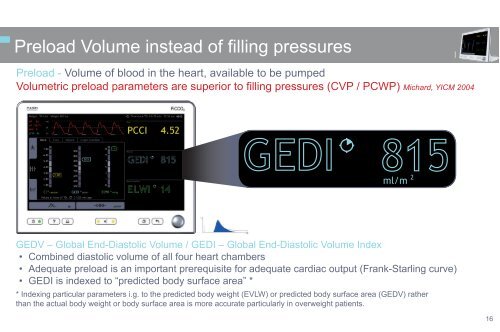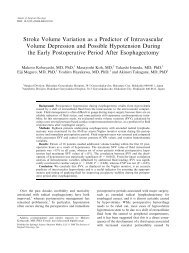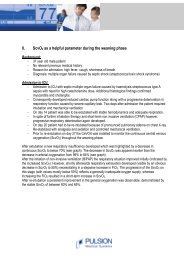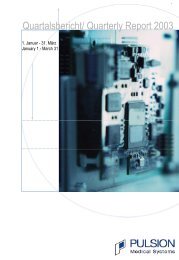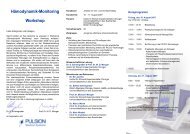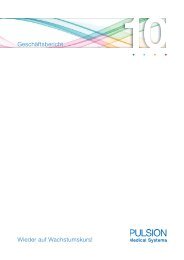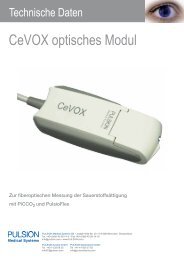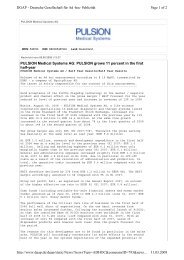PiCCO2 Nurse Booklet - PULSION Medical Systems SE
PiCCO2 Nurse Booklet - PULSION Medical Systems SE
PiCCO2 Nurse Booklet - PULSION Medical Systems SE
You also want an ePaper? Increase the reach of your titles
YUMPU automatically turns print PDFs into web optimized ePapers that Google loves.
Preload Volume instead of filling SVRI pressures 1735<br />
PCCI<br />
MAP<br />
Volume<br />
SVV 9<br />
-5 2<br />
dyn*s*cm m<br />
Preload - Volume of blood in the heart, available to be pumped<br />
l/min/m 2<br />
SVI 47<br />
ml/m 2<br />
l/min/m2 Volumetric preload parameters are superior to filling pressures (CVP / PCWP) Michard, YICM 2004<br />
ml/m 2<br />
GEDV – Global End-Diastolic Volume / GEDI – Global Organ End-Diastolic Function Volume Index<br />
• Combined diastolic volume of all four heart chambers<br />
• Adequate preload is an important prerequisite for adequate cardiac output (Frank-Starling curve)<br />
• GEDI is indexed to “predicted body surface area” *<br />
* Indexing particular SVRI parameters i.g. to the predicted body weight (EVLW) or predicted body surface area (GEDV) rather<br />
than the actual body weight or body surface area is more accurate particularly in overweight patients.<br />
ml/kg<br />
%<br />
16


